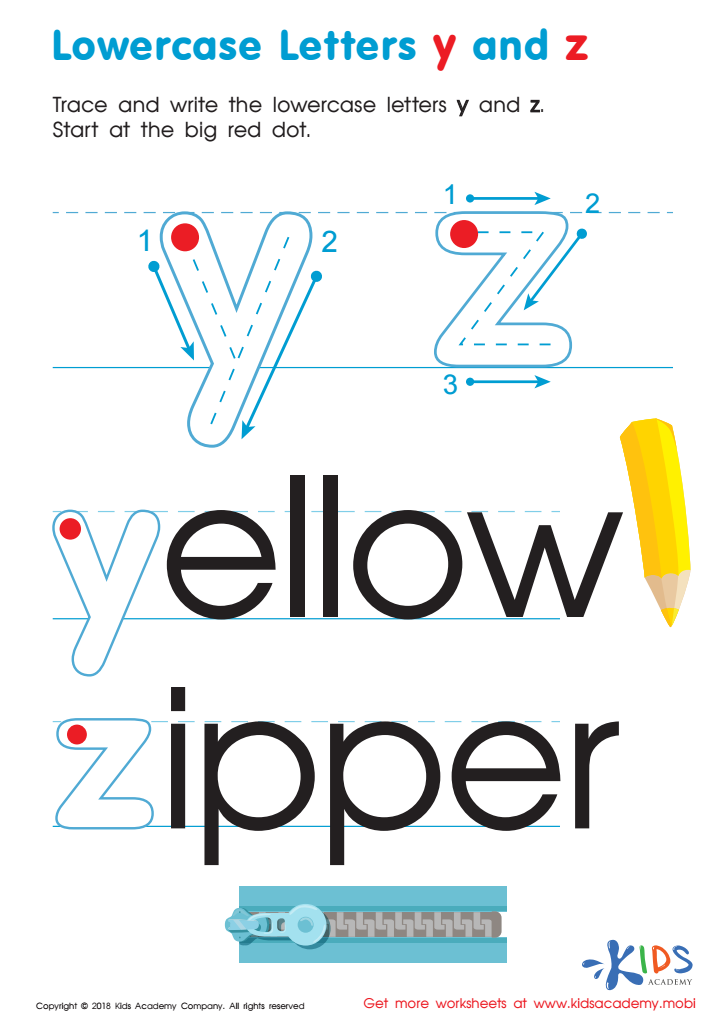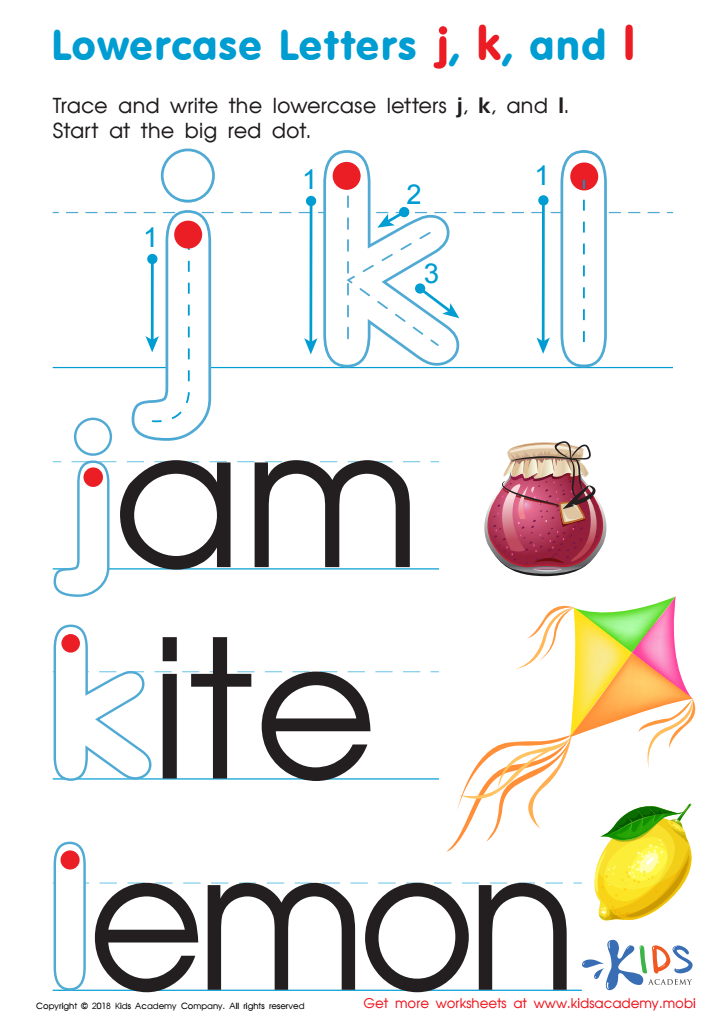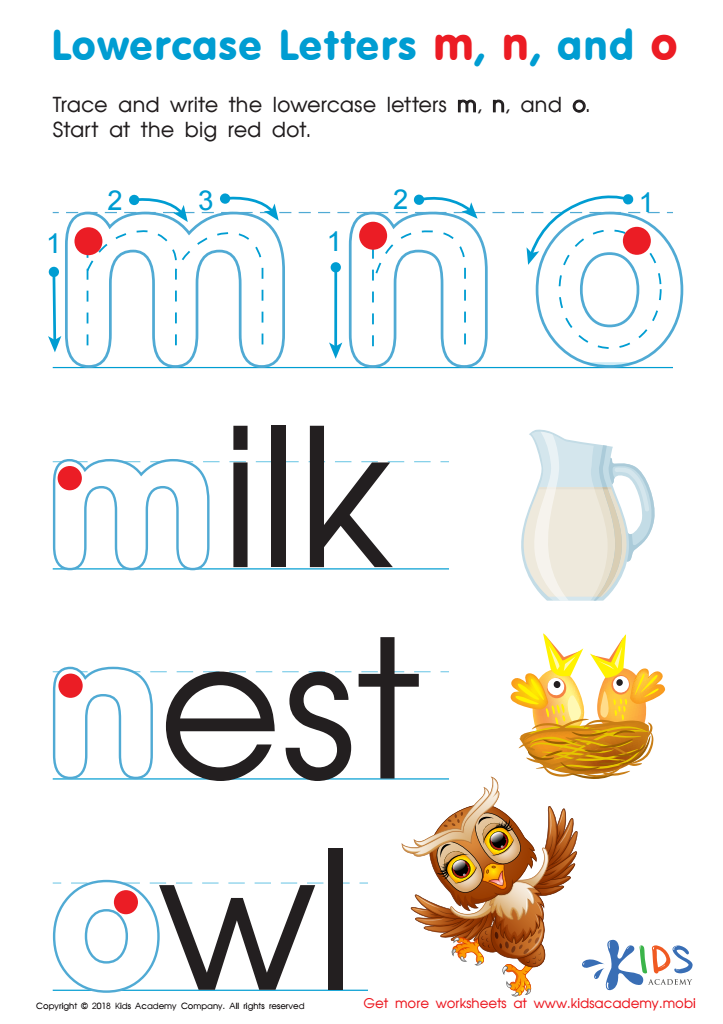Lowercase letter writing Normal Tracing Letters Worksheets for Ages 3-6
3 filtered results
-
From - To
Welcome to our "Lowercase Letter Writing Normal Tracing Letters Worksheets" designed specifically for ages 3-6! These engaging worksheets help young learners develop essential writing skills while familiarizing them with the lowercase alphabet. Each worksheet features clear tracing patterns to guide children as they practice letter formation, enhancing their motor skills and handwriting proficiency. Ideal for both home and classroom settings, these resources promote letter recognition and encourage independent writing. With colorful illustrations and fun activities, your little ones will enjoy every step of their learning journey. Download our worksheets today to set the foundation for a lifelong love of writing!


Lowercase Letters y z Worksheet


Lowercase Letters j k l Worksheet


Lowercase Letters m n o Worksheet
Parents and teachers should care about lowercase letter writing and normal tracing letters for children aged 3-6 as it lays the foundation for essential literacy skills. During this critical developmental stage, children are honing their fine motor skills, which are vital for future writing, drawing, and even daily tasks. Lowercase letter tracing helps enhance hand-eye coordination and muscle memory and promotes the proper grip on writing instruments, fostering confidence as children transition to independent writing.
Furthermore, lowercase letters are predominant in written language; thus, mastering their formation is essential for effective reading and writing later on. Tracing activities engage children in a fun and interactive way, making learning enjoyable and stimulating. It's also an opportunity for parents and teachers to introduce phonemic awareness by associating letters with sounds and words, reinforcing language development.
Moreover, developing letter writing skills early contributes to a child's overall academic success. By emphasizing lowercase letter writing at this young age, adults can instill positive attitudes toward learning, encouraging curiosity and perseverance as children embark on their educational journeys. Investing time in this practice will yield long-term benefits, enabling children to communicate effectively and express themselves as they grow.
 Assign to My Students
Assign to My Students















